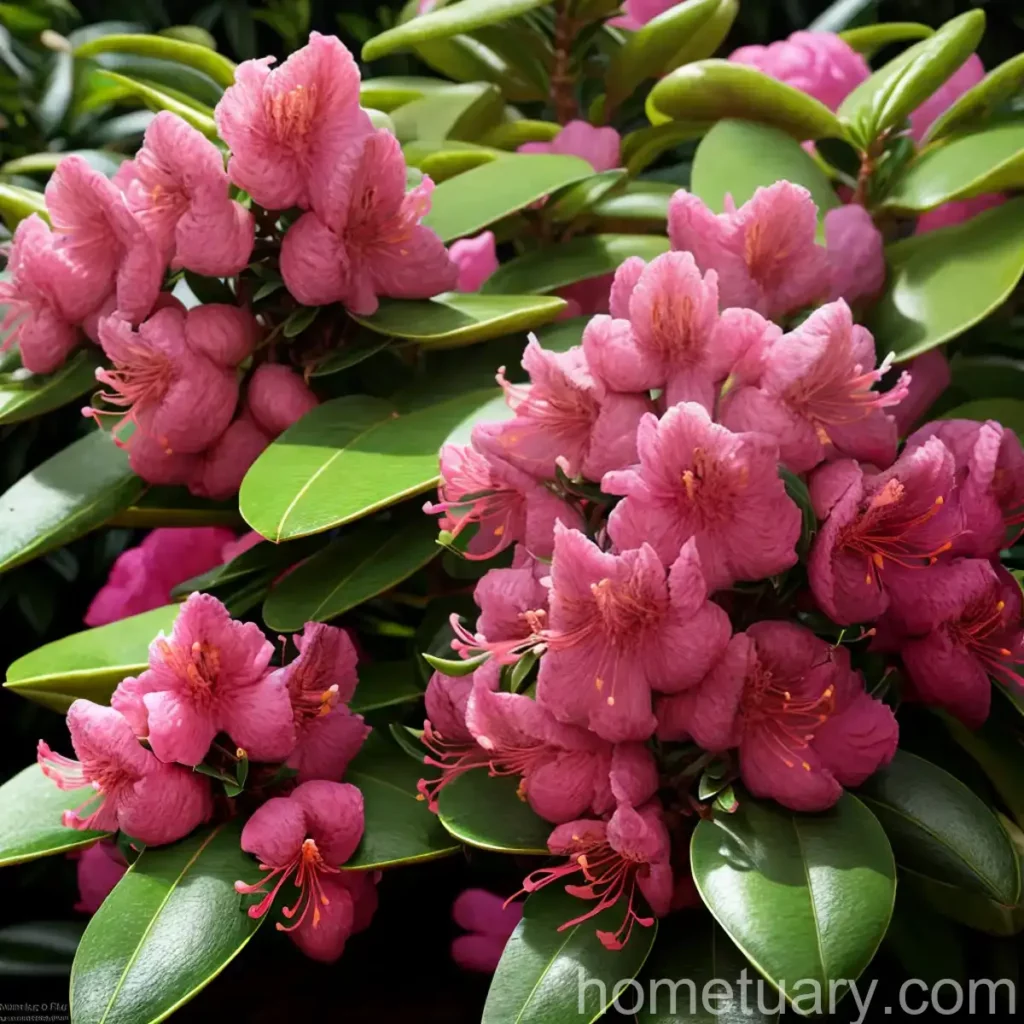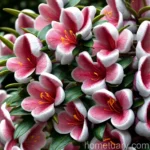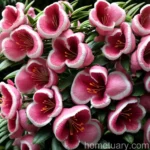The Rhododendron (Rhododendron ‘P.J.M. Elite’): A Comprehensive Guide
The Rhododendron, specifically the Rhododendron ‘P.J.M. Elite’, is a stunning and highly sought-after plant known for its beautiful flowers and adaptable nature. In this comprehensive guide, we will explore the key aspects of caring for and cultivating this exceptional plant. Whether you are an experienced gardener or a newcomer to the world of horticulture, there will be something for everyone to learn about the captivating Rhododendron ‘P.J.M. Elite’.
What is the Rhododendron (Rhododendron ‘P.J.M. Elite’)?
The Rhododendron ‘P.J.M. Elite’ is a cultivar of the larger genus Rhododendron, which belongs to the family Ericaceae. This evergreen shrub is valued for its abundant clusters of delicate, bell-shaped flowers and its year-round attractive foliage. The ‘P.J.M. Elite’ cultivar is particularly beloved for its compact size, making it an excellent choice for gardens with limited space.
Key Takeaways – Rhododendron (Rhododendron ‘P.J.M. Elite’)
- Scientific Name: Rhododendron ‘P.J.M. Elite’
- Type: Evergreen shrub
- Notable Feature: Abundant clusters of bell-shaped flowers
- Cultivar Benefits: Compact size, year-round attractive foliage
Now that we have a brief overview of the Rhododendron ‘P.J.M. Elite’, let’s delve into the specifics of caring for and cultivating this magnificent plant.
Culture
Understanding the culture and specific requirements of the Rhododendron ‘P.J.M. Elite’ is essential for promoting its optimal growth and health. From water and sunlight to soil and pruning, each aspect plays a crucial role in nurturing this captivating shrub.
Uses
Rhododendron ‘P.J.M. Elite’ is valued for various landscaping and gardening purposes including:
- Ornamental decoration in gardens and landscapes
- Hedging and screening due to its dense and compact growth habit
- Providing colorful blooms and year-round foliage interest
- Attracting pollinators such as bees and butterflies
This versatile shrub’s ability to thrive in various settings makes it an ideal choice for both residential and commercial landscaping projects.
Water
Proper watering is crucial for the health and vitality of Rhododendron ‘P.J.M. Elite’. Here are some essential guidelines for watering this shrub:
- Consistent Moisture: The Rhododendron ‘P.J.M. Elite’ prefers consistently moist, well-drained soil. Avoid waterlogged conditions, as this can lead to root rot and other issues.
- Seasonal Adjustments: Adjust watering frequency based on the season. During hot and dry periods, increase watering to maintain adequate soil moisture. In contrast, reduce watering in cooler, wetter seasons.
Sunlight
The Rhododendron ‘P.J.M. Elite’ thrives in partial shade to full sun, making it adaptable to a range of light conditions. However, providing the ideal sun exposure is essential for promoting robust growth and abundant flowering:
- Partial Shade: Ideally, the shrub should receive dappled sunlight or be shaded during the intense midday sun, especially in regions with hot summers.
- Optimal Light: While partial shade is preferred, providing ample indirect sunlight is essential for profuse flowering and healthy foliage.
Fertilizer
Appropriate fertilization is essential for supplying the necessary nutrients to support the Rhododendron ‘P.J.M. Elite’s growth and flowering. Consider the following when fertilizing this cultivar:
- Acidic Fertilizer: Use a specialized acidic or ericaceous fertilizer to maintain the soil’s pH level within the ideal range for Rhododendron cultivation.
- Application Schedule: Apply fertilizer in early spring before new growth begins, and then again after flowering to support the plant’s overall health and blooming potential.
Soil
The soil composition and structure significantly impact the Rhododendron ‘P.J.M. Elite’s growth and well-being. Here are the key considerations for selecting and maintaining suitable soil conditions:
- Acidic Soil: Rhododendron ‘P.J.M. Elite’ thrives in acidic soil with a pH range between 4.5 and 6.0. Ensuring the soil is appropriately acidic is critical for the plant’s long-term health.
- Well-Draining Soil: The shrub requires well-draining, humus-rich soil to prevent waterlogged conditions and root suffocation. Consider amending heavy or compacted soil with organic matter to improve drainage and aeration.
Pruning
Pruning is an essential aspect of maintaining the Rhododendron ‘P.J.M. Elite’s shape, blooming potential, and overall vigor. When it comes to pruning this cultivar, keep the following points in mind:
- Timing: Prune immediately after flowering to avoid compromising next year’s blooming potential.
- Purpose: Regular pruning helps maintain a compact shape, remove dead or diseased branches, and encourage new growth.
Propagation
Propagation methods for Rhododendron ‘P.J.M. Elite’ include:
- Cuttings: Stem cuttings provide a reliable method for propagating this cultivar. Choose healthy, non-flowering shoots and follow proper cutting and planting procedures to increase your Rhododendron ‘P.J.M. Elite’ population.
Container Popularity
The compact nature and ornamental appeal of Rhododendron ‘P.J.M. Elite’ make it a popular choice for container gardening. Consider the following when cultivating this cultivar in containers:
- Container Selection: Choose a spacious and well-draining container to accommodate the plant’s growth and root development.
- Potting Mix: Use an acidic potting mix designed for acid-loving plants to create an optimal growing environment.
Common Diseases
Despite its hardiness, Rhododendron ‘P.J.M. Elite’ is susceptible to certain diseases. Understanding and identifying these potential threats is crucial for timely intervention and effective disease management.
Disease Diagnosis
Common diseases that may affect this cultivar include:
- Phytophthora Root Rot: This fungal disease can cause wilting, yellowing of leaves, and eventual plant decline. Avoid overwatering and promote soil drainage to prevent this disease.
- Powdery Mildew: Recognized by a powdery, white coating on leaves, powdery mildew can impact the plant’s overall health and appearance. Providing adequate air circulation and reducing leaf moisture can help prevent this fungal disease.
Common Pests
Rhododendron ‘P.J.M. Elite’ may attract pests such as:
- Weevils: These insects can cause significant damage to the plant by feeding on foliage and creating unsightly notches along the edges of leaves.
- Lace Bugs: Lace bugs can cause stippling and discoloration on the leaves, impacting the shrub’s overall aesthetic appeal.
Proactive pest management practices, including regular inspection and early intervention, are essential for preventing pest-related damage to the Rhododendron ‘P.J.M. Elite’.
Botanist’s Tips
To ensure the successful cultivation and care of Rhododendron ‘P.J.M. Elite’, consider the following botanist-approved tips:
- Mulching Benefits: Applying a layer of organic mulch around the base of the shrub offers numerous benefits, including moisture retention, weed suppression, and insulation against temperature fluctuations.
- Regular Monitoring: Periodically inspect the plant for signs of stress, disease, or pest infestations to address issues promptly and prevent them from escalating.
Fun Facts
- The ‘P.J.M. Elite’ cultivar is named after Peter J. Mezitt, a renowned nurseryman and breeder who significantly contributed to the development and popularization of Rhododendron cultivars.
- Rhododendron ‘P.J.M. Elite’ belongs to the broader genus Rhododendron, which encompasses over 1,000 species, ranging from ground-hugging shrubs to towering trees.
Links to External Resources
For additional information on Rhododendron care, cultivation, and maintenance, you may find the following resources informative and helpful:















